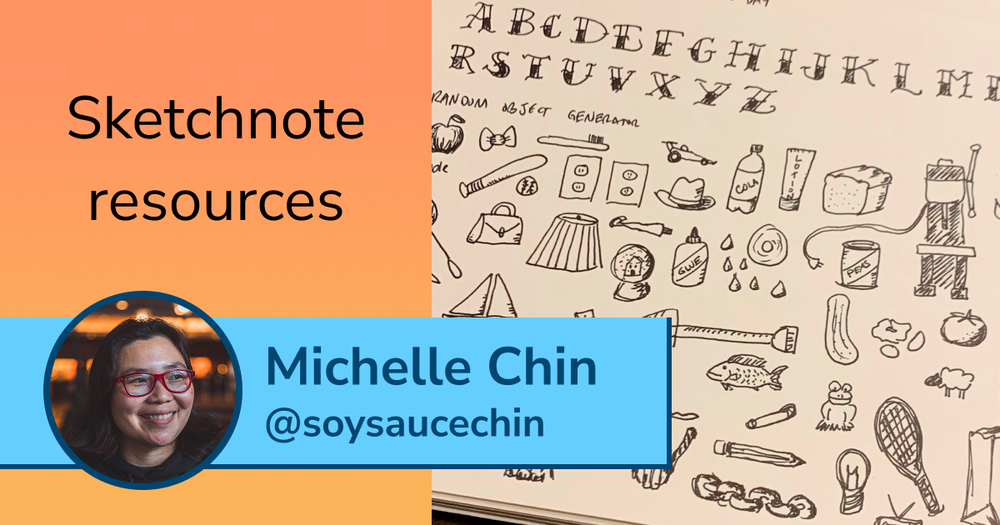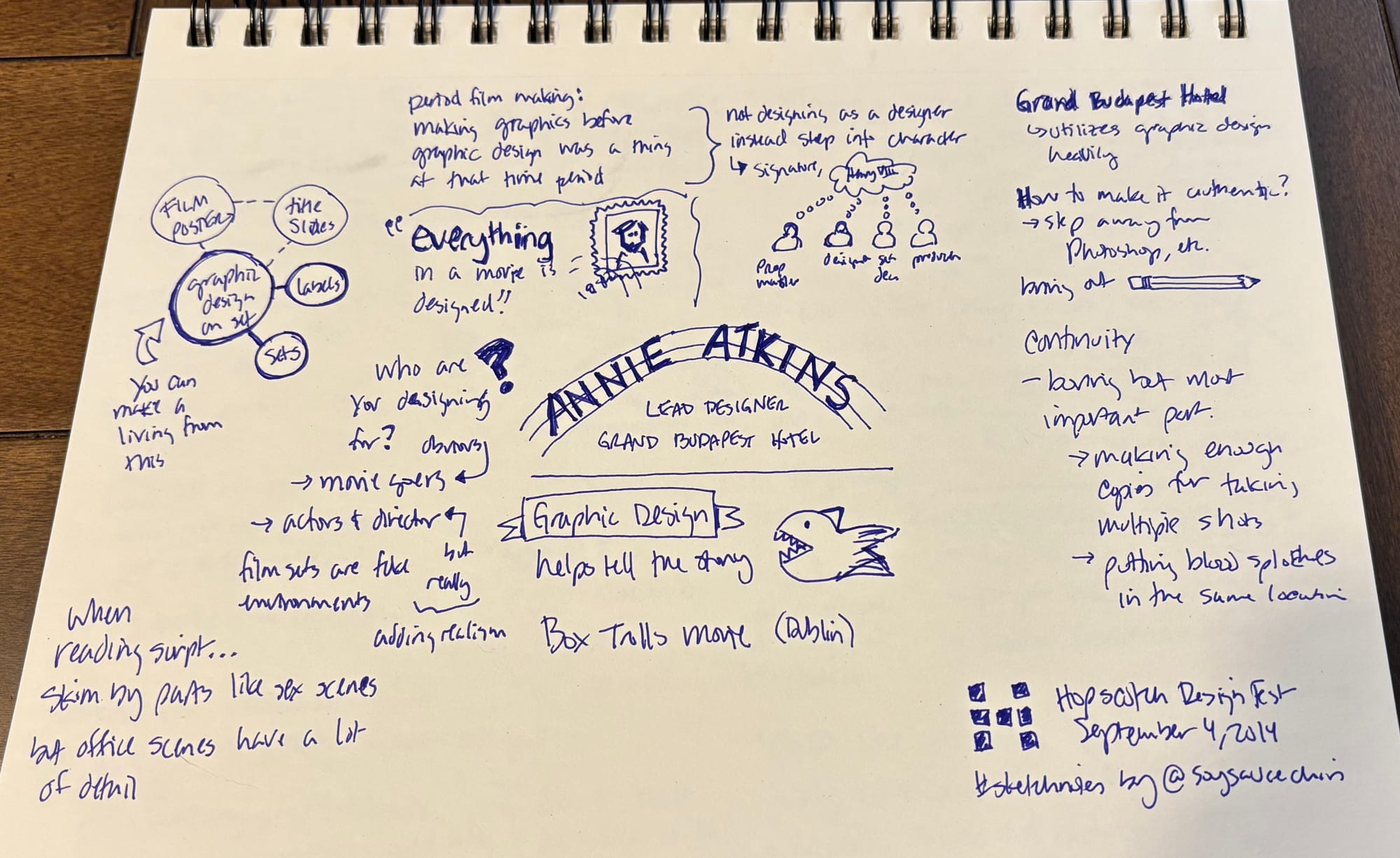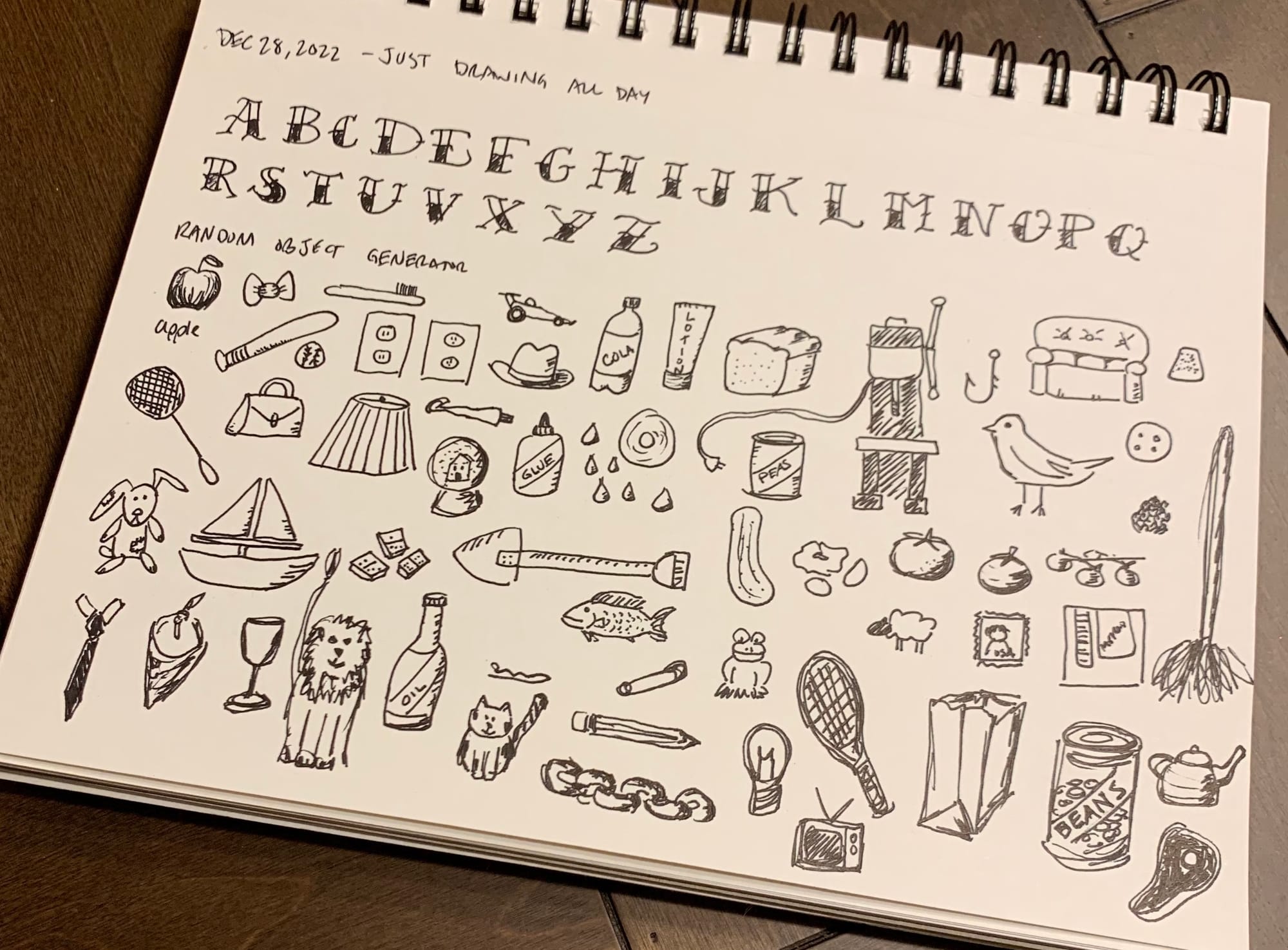Sketchnote Resources

Sketchnoting is a form of visual notetaking that combines drawing and writing. It’s a fun and intentional way of synthesizing and capturing notes. If you’re looking to get started, I’ve curated a few resources. I hope you give it a try and find it as much fun as I do!

Getting started
- The Sketchnote Handbook and The Sketchnote Workbook by Mike Rodhe - both these books are great for providing a foundation, but lots of opportunities to get you warmed up.
- Video: Sketchnoting 101 by April Reissmann at the Portland Design Thinkers meetup - this video goes into the basics of sketchnoting.
People to follow
These are some amazing sketchnoters—some who do this professionally! So use this as inspiration, not a measure of getting started.
- Hannah—Scribble Inc
- IG: @scribbleincltd
- Adrien Liard
- Kate Rutter
- Kate did a lot of UX sketchnoting, but you'll find her doing nature journaling, which is similar—and you get to be outside! (Touch grass, everyone!)
- IG: @katerutter
- Bluesky: @katerutter.bsky.social
- Veronica Erb
If there’s someone else I can add to this list, please let me know!
Community
- Sketchnote Army Slack
- Sketchnote Army Podcast
- Sketchnote Meetups - virtual and in-person groups
- Sketchnotes on Flickr
- Sketchnotes on Instagram
Tools and materials
When it comes to writing and drawing, the ideal tools and materials for you can be deeply personal. So when thinking about pens and paper, here are some things to consider:
- How well does the pen allow you to write?
- Does it make your handwriting messy?
- Is your hand tired from writing?
- Does the ink smear too easily?
- How well does the paper feel when you write?
- Does it feel too rough or too smooth?
- Are you always running out of room? (too small?)
- Does the ink bleed through the paper?
What I’m using
If you need a starting point, I listed some of my go-to options for both analog and digital.
Analog
Digital
For digital sketchnoting, I use an iPad and Apple Pencil. The most important thing you’ll need is a screen protector that has a matte or paper-like finish. This allows you to draw on your iPad as if you’re drawing on paper. This makes a huge difference. Without it, it’ll feel like your Apple Pencil is sliding all over the screen as you draw.
I bounce between two apps—Notability and Procreate. For procreate, my go-to pen is the technical pen for lines and studio pen for fills.
Challenges
Sketchnoting can come with a unique set of challenges. It’s primarily a different way of thinking because you’re synthesizing and capturing at the same time. When I’ve taken notes at conference talks before, I’m usually capturing to synthesize later. So as you’re getting the hang of sketchnoting, here are a few tips:
1. Sketchnoting takes practice!
Maybe at first, you’re writing more than you’re synthesizing—that’s OK! The more you practice, the easier all this will become.
2. Preparing ahead of time can be very helpful!
This goes along with practicing. The more prepared you are, the easier sketchnoting will be. You can look at talk titles and descriptions to see what you might draw in your sketchnotes. If the talk is about AI, maybe you draw robots. You can also get comfortable creating your own typefaces and styles. With your tool kit of drawing ideas, typefaces, etc. you can focus on sketchnoting and not inventing things on the fly!

3. Sketchnoting with people around you is intimidating!
I’ve sat next to friends eagerly awaiting to see what I come up with and that’s made me feel self-conscious. Just remember, these notes are for you. So focus on why you’re doing these sketchnotes for yourself—to learn, practice, etc.
4. Sharing is optional, but encouraged!
Your sketchnotes are for you, so you can choose to share them if you’d like. I usually share mine to hold myself accountable for practicing and refining my skills. (The times when I haven’t done this, I just end up taking notes.) Sharing your sketchnotes, even if they’re not great, can also be really encouraging! It might inspire others to start or it might motivate you to continue.
Subscribe to my blog updates
No spam, just updates on posts I write. Unsubscribe anytime.